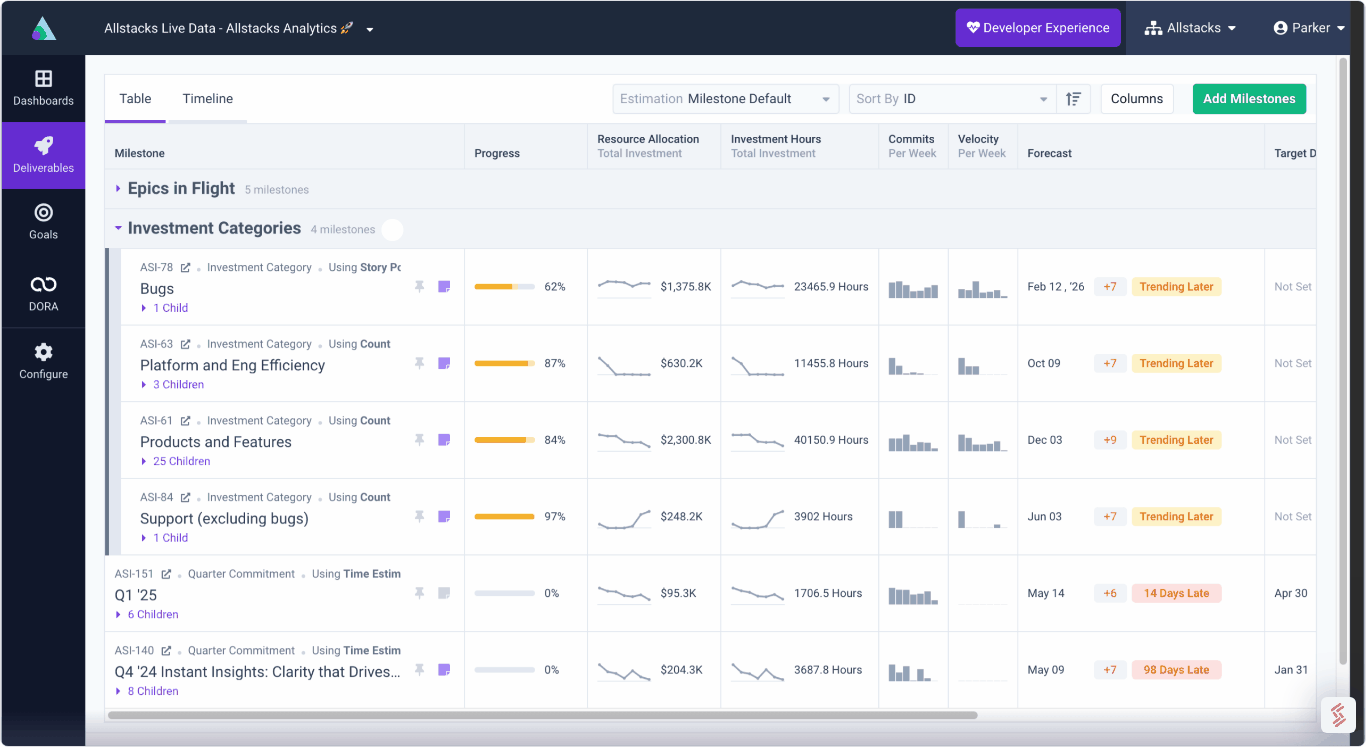.png)
Software Engineering Intelligence
-
Intelligence Engine
On-demand exhaustive AI-analysis
-
Engineering Investment
Complete visibility into time & dollars spent
-
360º Insights
Create meaningful reports and dashboards
-
Project Forecasting
Track and forecast all deliverables
DevEx
-
Developer Surveys
Create and share developer surveys
Software Capitalization
-
R&D Capitalization Reporting
Align and track development costs
From Code to Boardroom: What We Learned From 20 Engineering Leaders in Silicon Valley
Last month, we had the privilege of hosting an intimate dinner with 20 of Silicon Valley's most accomplished engineering leaders—what followed was an enlightening conversation about the realities of senior technical leadership.
The Great Divide: Internal vs. External Leadership
One of the most striking themes was the fundamental difference between managing internal engineering responsibilities and communicating with external stakeholders. These leaders described a constant translation process—taking complex technical decisions and presenting them in ways that resonate with executive teams and board members who may not share their technical background.
The challenge isn't just about simplifying complex concepts; it's about reframing technical work within the context of business strategy and outcomes. This external communication requires a completely different skill set than managing engineering teams internally, where technical precision and detail are valued.
The Identity Shift: From Team Builder to Business Enabler
Perhaps the most profound insight came from discussing the transition from Director to VP or CTO roles. As one participant put it, the job fundamentally changes from "I have a responsibility to make my engineering team as effective as possible" to "I have a responsibility to leverage my organization's capabilities to make this business as successful."
This shift represents more than just a change in scope—it's a complete reorientation of identity. Success is no longer measured by the health and productivity of your engineering organization alone, but by how effectively that organization drives business outcomes.
Lost in Translation: The Jargon Trap
Our icebreaker question revealed a universal experience: we asked each leader to share an anecdote about a time they had made their CEO's eyes glaze over. The response was unanimous—every single story centered around using too much engineering jargon when communicating with business stakeholders.
This awareness was refreshing. These seasoned leaders were acutely conscious of the communication gap between engineering and business languages. They understood that their technical expertise could become a barrier rather than an asset when not properly translated into business impact and value.
The Power of Cross-Functional Experience
What truly set these leaders apart was the breadth of their career experiences. Many had spent significant time in other parts of the business—leading sales teams, running marketing organizations, managing finance operations. This cross-functional exposure had given them empathy for the broader business challenges and an understanding of how engineering fits into the larger organizational ecosystem.
Equally important were their early experiences as individual contributors who had direct interaction with end-users, one shared a story about fixing a critical defect in a payment platform that rescued a small business owners ability to transact in their highest volume hours. That experience led her to reframe how she thought about engineering and it’s impact, altogether, humanizing the users on the other end. These formative experiences shaped their craft and led them to think more holistically about the purpose and impact of their technical work. They understood that great engineering isn't just about elegant code—it's about solving real problems for real people.
The ROI Imperative
The evening's discussions culminated in a crucial realization: engineering must be framed as a series of investments with clear ROI and alignment to business goals. This isn't just about securing budget or gaining executive buy-in—though those are important outcomes. It's about elevating the entire engineering organization and providing motivation and context that cascades all the way down to individual developers.
When engineers understand how their work connects to business objectives, they make better decisions, write better code, and find deeper meaning in their daily tasks. As AI-powered coding tools become increasingly prevalent, this business context becomes even more critical. The human judgment that guides these powerful tools must be informed by a clear understanding of what success looks like from a business perspective.
The most successful engineering leaders of tomorrow will be those who can seamlessly bridge the technical and business worlds, translating between code and commerce with equal fluency. They'll understand that their ultimate responsibility isn't to technology—it's to the business outcomes that technology enables.
We're already planning our next gathering and look forward to hosting similar events across San Francisco and other cities throughout the US and Europe. The conversations are too valuable—and the insights too important—to limit to a single evening.

